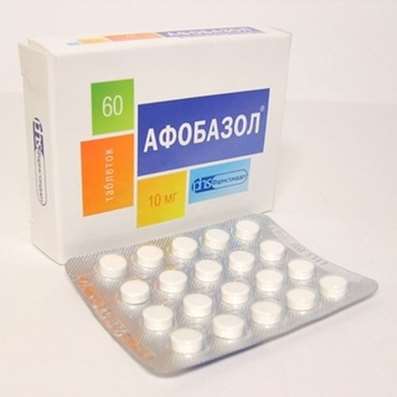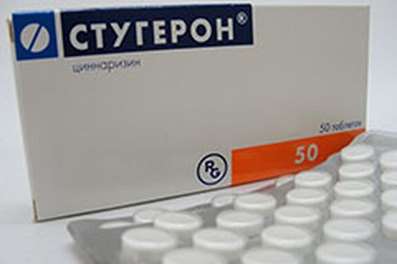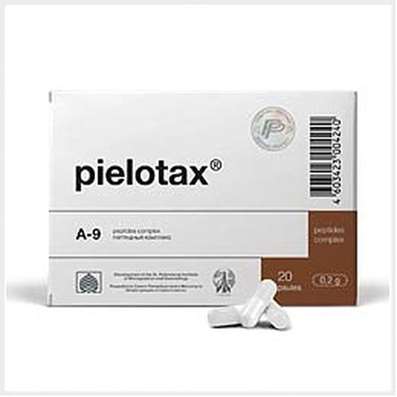Instruction for use: Otrivin Complex
I want this, give me price
Active substance: Ipratropium bromide + Xylometazoline
ATX Code
R01AB06 Xylometazoline in combination with other drugs
Pharmacological group
Antitussive medication [m-anticholinergics in combinations]
Antitussive medication [Antikongestants in combinations]
The nosological classification (ICD-10)
J00 Acute nasopharyngitis [runny nose]
Viral rhinitis, Inflammation of the nasopharynx, Inflammatory diseases of the nose, purulent rhinitis, Nasal congestion, Nasal congestion with colds and flu, The difficulty of nasal breathing, The difficulty of nasal breathing for colds, Difficulty in nasal breathing, Difficulty in nasal breathing in colds, nasal, hypersecretion, cold, ARI with rhinitis phenomena, coryza, Acute rhinitis of various origins, Acute rhinitis with thick purulent mucous exudate, Acute nasopharyngitis, Swelling of the mucosa of the nasopharynx, Rhinitis, rhinorrhea, Infectious-inflammatory diseases of ENT organs, heavy cold, rhinopharyngitis, nasopharyngitis
J01 Acute sinusitis
Inflammation of the sinuses, Inflammatory diseases of the paranasal sinuses, Purulent inflammation of the paranasal sinuses, Infectious-inflammatory diseases of ENT organs, Infection of the sinuses, Combined sinusitis, Exacerbation of sinusitis, Acute inflammation of the paranasal sinuses, Acute bacterial sinusitis, Acute sinusitis in adults, Subacute sinusitis, acute Sinusitis, sinusitis
J06 Acute upper respiratory infections of multiple and unspecified
Frequent colds viral diseases, Infections of the upper respiratory tract, Acute respiratory disease influenza character, for colds Pain, Acute colds,Cold, respiratory infection,Seasonal colds, Pain in infectious and inflammatory diseases of the upper respiratory tract, Bacterial infections of the upper respiratory tract, Bacterial respiratory infections, Viral disease of the respiratory tract, Viral respiratory tract infections, Inflammatory disease of the upper respiratory tract, Inflammation of the upper respiratory tract disease, Inflammation of the upper respiratory tract illness with difficult sputum, Inflammatory airway disease, Secondary infections with colds, Shortness of sputum in acute and chronic respiratory diseases, Upper respiratory tract infection, Infections of the upper respiratory tract, Respiratory Tract Infections, Infections of the respiratory tract and lungs, Infectious-inflammatory diseases of the upper respiratory tract, Infectious-inflammatory diseases of the upper respiratory tract and ENT-organs, Infectious-inflammatory diseases of the upper respiratory tract in children and adults, Infectious-inflammatory diseases of the upper respiratory tract, Infectious inflammation of the airways,respiratory infection, Qatar upper respiratory tract, Catarrh of the upper respiratory tract, Catarrhal disease of the upper respiratory tract, Catarrhal symptoms of the upper respiratory tract, Coughing with a cold, SARS, ARI, ARI with rhinitis phenomena, Acute respiratory infection, Acute infectious and inflammatory disease of the upper respiratory tract, Acute respiratory disease, Sore throat or nose, Respiratory viral infections, Respiratory diseases, Respiratory infections, Recurrent respiratory infections, Secondary infection with influenza, cold in the chest, Feverish condition with flu usitis, acute sinusitis, genyantritis, purulent sinusitis
J30 Vasomotor and allergic rhinitis
Allergic rinopatiya, Allergic rhinosinusopathy, Allergic respiratory diseases, Allergic rhinitis, nasal allergy, Seasonal Allergic Rhinitis, Vasomotor rhinitis, Long-allergic rhinitis, Perennial allergic rhinitis, Perennial allergic rhinitis, Year-round or seasonal allergic rhinitis, Year-round allergic rhinitis nature, Rhinitis allergic vasomotor, Exacerbation of pollen allergy in the form of Syndrome rinokonyunktivalnogo, Acute allergic rhinitis, Edema of the nasal mucosa, Edema of the nasal mucosa, Swelling of the mucosa of the nasal cavity, Swelling of the nasal mucosa, Swelling of the nasal mucosa, pollen disease, Permanent allergic rhinitis, rhinoconjunctivitis, rhinosinusitis,rhinosinusopathy, Seasonal allergic rhinitis, Seasonal Allergic Rhinitis, Haymarket rhinitis, Chronic allergic rhinitis, Allergic respiratory diseases
J30.1 Allergic rhinitis caused by the pollen
hay fever, Hypersensitivity to pollen, Polypoid allergic rhinosinusitis, Seasonal hay fever, rhinitis
J32 Chronic sinusitis
Allergic rhinosinusopathy, purulent sinusitis, Catarrh nasopharyngeal area, Catarrh of the sinuses, Exacerbation of sinusitis, chronic Sinusitis
Composition and form of release
Spray nasal 1 ml
Active substances:
Xylometazoline hydrochloride 0.5 mg
Ipratropium bromide monohydrate 0.6 mg
Auxiliary substances: glycerol (85%) - 27.9 mg; Disodium edetate dihydrate 0.5 mg; Hydrochloric acid is concentrated or sodium hydroxide is q.s. Up to pH 4.5; Water - up to 1 ml
Description of dosage form
A clear, colorless or slightly colored solution with virtually no odor.
pharmachologic effect
Pharmacological action - anticongestive, alpha-adrenomimetic, anticholinergic.
Pharmacodynamics
Xylometazoline belongs to the group of local vasoconstrictors (decongestants) with α-adrenomimetic action, causes narrowing of the blood vessels of the nasal mucosa, thereby eliminating edema and hyperemia of the nasopharyngeal mucosa. Relieves obstruction, facilitating nasal breathing in rhinitis.
Ipratropium bromide has an anticholinergic effect. With intranasal application reduces nasal secretion, stopping hypersecretion of the glands of the nasal mucosa due to competitive inhibition of cholinergic receptors located in the epithelium of the nasal cavity. In therapeutic concentrations, it does not irritate the mucous membrane, does not cause its hyperemia.
The drug begins to act after 5-10 minutes and has a persistent effect for 6-8 hours.
Pharmacokinetics
In the intranasal application, ipratropium bromide and xylometazoline hydrochloride are little absorbed and present in the blood plasma in small amounts.
Indication
Symptomatic treatment of edema and hyperemia of the nasal cavity;
Acute respiratory diseases with phenomena of rhinitis (rhinitis), accompanied by obstruction;
Acute allergic rhinitis;
Pollinosis;
sinusitis.
Contraindications
Hypersensitivity to the components of the drug;
Hypersensitivity to atropine or similar compounds (hyoscyamine, scopolamine);
glaucoma;
Surgical interventions on the membranes of the brain (in the anamnesis);
Pregnancy (I trimester);
Atrophic rhinitis;
Age to 18 years.
With caution: diabetes mellitus; Hyperthyroidism; Pheochromocytoma; Angina pectoris III-IV functional class; Obstruction of the neck of the bladder; Hyperplasia of the prostate. It is recommended to use caution in the treatment of patients prone to nosebleeds, dizziness, skeletal muscle tremors, sleep disorders, arrhythmias, increased blood pressure, paralytic intestinal obstruction and cystic fibrosis.
If the patient has one of the listed diseases, before taking the drug should always consult a doctor.
pregnancy and lactation
During pregnancy (II-III trimesters) and breast-feeding, the drug should only be used after a thorough assessment of the benefit-risk ratio for the mother and fetus, and the recommended dosage should not be exceeded.
Side effects
Classification of incidence of adverse reactions: very often - more than 1/10 of prescriptions (≥10%); Often more than 1/100, but less than 1/10 of prescriptions (≥1%, but <10%); Infrequently - more than 1/1000, but less than 1/100 of appointments (≥0.1%, but <1%); Rarely more than 1/10000, but less than 1/1000 appointments (≥0.01%, but <0.1%); Very rarely - less than 1/10000 prescriptions (<0.01%).
From the nervous system: often - headache; Rarely - dizziness; Very rarely - insomnia.
On the part of the digestive system: often - dry mouth; Infrequently - dyspepsia, nausea.
From the sense organs: rarely - an increase in IOP, mydriasis, pain in the eyes, deterioration of the condition with a closed angle glaucoma; Very rarely - a violation of the clarity of visual perception.
From the urinary system: rarely - difficulty urinating.
On the part of the respiratory system: often - nosebleeds, irritation and / or dryness of the nasopharyngeal mucosa, burning sensation, tingling, sneezing, nasal hypersecretion; Infrequent - nasal congestion (with frequent and / or prolonged use of the drug).
From the CCC: rarely - heart palpitations, supraventricular tachycardia, atrial fibrillation; Very rarely - arrhythmic pulse.
From the skin: rarely - itching, skin rash, urticaria.
Allergic reactions: rarely - systemic allergic reactions (anaphylactic reaction, angioedema, tongue, lips and face, laryngospasm).
If any of the above side effects are aggravated or any other side effects not listed in the description are noted, you should inform your doctor.
Interaction
The drug is incompatible with MAO inhibitors, tri- and tetracyclic antidepressants.
Sympathomimetic drugs cause the release of catecholamines, incl. Norepinephrine, which has a vasoconstrictive effect, which increases blood pressure. With a significant increase in blood pressure, treatment with OtrivinŽ Complex should be abolished, symptomatic treatment should be performed.
Simultaneous use with tri- and tetracyclic antidepressants can enhance the sympathomimetic effect of xylometazoline.
With the concomitant administration of other drugs with anticholinergic activity, the anticholinergic effect of ipratropium bromide may be enhanced.
Dosing and Administration
Intranasally.
For patients over the age of 18 years - 1 injection in each nasal passage 3 times a day. The drug is used no more than 7 days without consulting a doctor. Long-term use of xylometazoline can cause swelling of the nasal mucosa and an increase in secretion, which is due to the development of increased sensitivity of cells to the active substances of the drug, the so-called. Reverse effect.
One injection of OtrivinŽ Complex contains about 70 μg of xylometazoline hydrochloride and 84 μg of ipratropium bromide.
Overdose
When nasal application of the drug OtrivinŽ Complex acute overdose is unlikely, because Absorption of the drug is very low.
Xylometazoline
Symptoms: the clinical picture is characterized by nausea, sweating, lowering of body temperature, headache, bradycardia, accommodation disorder, hypertension, respiratory depression, coma. Hypertension can be replaced by hypotension.
Treatment: symptomatic therapy should be performed under the supervision of a physician.
Ipratropium bromide
Symptoms: with excessive use of ipratropium bromide, an overdose is unlikely, due to extremely low absorption of the substance into the blood, but dry mouth, difficulty in accommodation, tachycardia can develop.
Treatment: symptomatic.
A significant overdose can cause symptoms associated with the anticholinergic effect of the drug on the part of the central nervous system, including hallucinations, for the elimination of which cholinesterase inhibitors are prescribed.
special instructions
Before application, it is necessary to clean the nasal passages.
Do not use for a long time, for example, with chronic rhinitis.
Avoid contact with eyes or eyes. In case of contact, there may be temporary blurred vision, irritation, pain, redness of the eyes, possibly exacerbation of the closed-angle glaucoma. It is advisable to rinse your eyes with cold water if you get a drug and consult a doctor if you have eye pain or blurred vision.
Influence on the ability to drive vehicles and mechanisms. The use of the drug OtrivinŽ Complex in therapeutic doses does not affect the ability to drive vehicles and mechanisms.
Release Form
Spray nasal, 0.5 mg / ml + 0.6 mg / ml. For 10 ml of the drug in a vial of PVP, equipped with a pump dosing device with a tip of polypropylene and a protective cap made of PE. The bottle is placed in a cardboard box.
Conditions of supply of pharmacies
Without prescriptions
storage Conditions
At a temperature not exceeding 25 ° C.
Keep out of the reach of children.
Shelf life
3 years.
Do not use after the expiry date printed on the package.

 Cart
Cart





